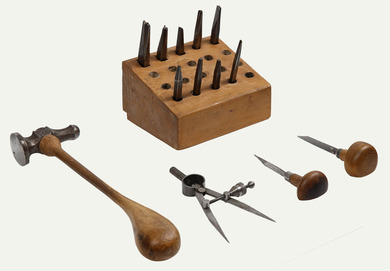Word and hand
In the beginning the hand was a claw to hold stones and the triumph of humanity has been to make it an increasingly skilled servant in fulfilling man’s production ideas.
André Leroi-Gourhan, Hand und Wort, 1964 (translated into German by Michael Bischoff)
Recording text or images has mostly been a manual process. Whether embossing, scribing, applying colour directly or using stencils - the human hand is indispensable as a gripping tool. It works using tools to produce a design on different materials: whether hammer and chisel or punch, stylus or knife, a hand (mostly the right one) guides the writing implement, while both hands are used to operate a keyboard with the tips of our fingers (“the world at your fingertips”). Nerve tracts run between our brain, with its two halves, and our two hands, and our two eyes supervise everything around us.
The link between right-handedness and left-handedness and processes in the brain are investigated in brain research. About every tenth person is left-handed. Only two generations ago, left-handed people were retrained to use their right hands, something which today is seen as an unacceptable intervention into the brain.

